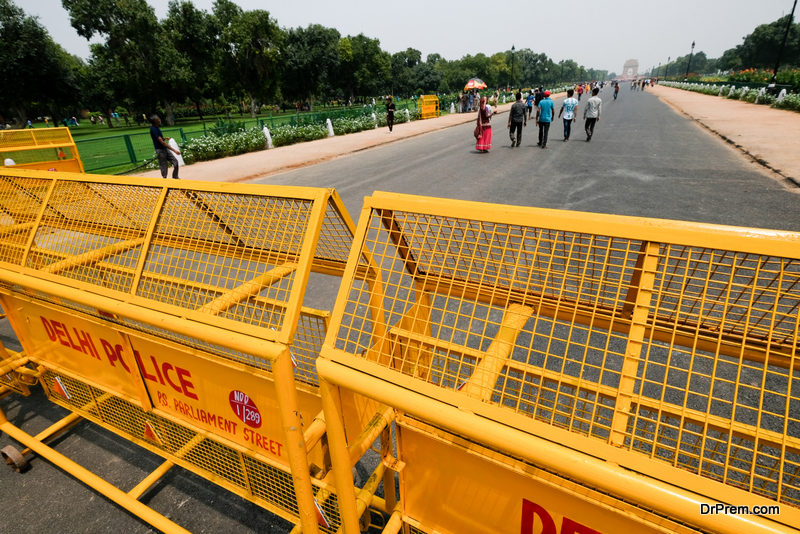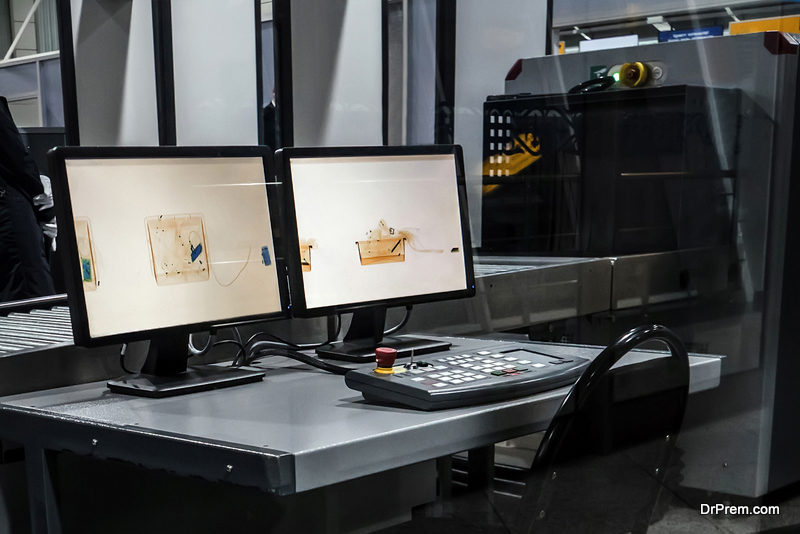First 1993, then 2006, and lastly 2008 – Mumbai has remained under the shadow of constant terror threat in the last 3 decades. Despite security upgrades and enhancements, the city continues to be vulnerable to terror. Of course, national security agencies are (or are they?) doing their best to combat this threat every single minute of the day. But is that enough? Or do we need to make Mumbai, perhaps, India terror-proof by making miniscule or monumental changes in its physical architecture? More importantly, can anti-terror architecture in India be the key to creating a safer, secure nation?
The rise of police stations across the city
 Post 26/11, across Mumbai, especially in the coastal regions, there was a significant rise in the number of police stations. Earlier, the limited numbers of existing police stations were like unconnected islands. After the terror siege on Mumbai, one big infrastructural change in the national security that took place was that these police stations increased in number and grew closer in proximity to each other. While this might ensure immediate action at the slightest inkling of a terrorist attack, it raises some unanswered questions too. Are the first responders – who are most likely the constables at these branches – trained enough to step into the role?
Post 26/11, across Mumbai, especially in the coastal regions, there was a significant rise in the number of police stations. Earlier, the limited numbers of existing police stations were like unconnected islands. After the terror siege on Mumbai, one big infrastructural change in the national security that took place was that these police stations increased in number and grew closer in proximity to each other. While this might ensure immediate action at the slightest inkling of a terrorist attack, it raises some unanswered questions too. Are the first responders – who are most likely the constables at these branches – trained enough to step into the role?
Police stations might have upgraded or enhanced to the point of responding quickly. But can the ones sitting inside respond effectively? Anti –terror architecture in India is about both the external as well as the internal changes. It’s not just the outer architecture that needs to be built or improvised. The inner infrastructure needs to be changed too. One thing that needs to happen as soon as possible is the change in the artillery of weapons. The constables and the inspectors at the police stations have to be equipped with modern-day war weaponry. No one is saying that we need military heavy firearms inside the cities; but the British era rifles won’t work anymore.
Inside a police station, the criminal records should be accessible to everyone. And police stations have to get rid of manual records. They are time-consuming to browse through. Moreover, in times of an emergency, these records will only delay the defense process further. Computerized records will surely fasten the process and provide an effective means to control terrorist siege.
The detectors- Are they an effective form of anti-terror architecture?
 The CST (Chattrapati Shivaji Terminus) was first built in 1888. A blend of Gothic Revival style of architecture and traditional Indian elements – this station was the first target of the terrorists on 26/11. More than 60 out of the total 166 casualties took place on CST. After the horrifying attack, doorframe detectors were placed at various points on the station. Metals overpowered the quaintly built stone structure. But can this significant anti-terror architectural change be effective enough to stop another 26/11?
The CST (Chattrapati Shivaji Terminus) was first built in 1888. A blend of Gothic Revival style of architecture and traditional Indian elements – this station was the first target of the terrorists on 26/11. More than 60 out of the total 166 casualties took place on CST. After the horrifying attack, doorframe detectors were placed at various points on the station. Metals overpowered the quaintly built stone structure. But can this significant anti-terror architectural change be effective enough to stop another 26/11?
No. With over more than 4.5 million commuters passing through the metal detectors every single day, these metal doorframes cannot stop beeping. The problem with this is that since millions of people pass through the detectors every day, it becomes impossible to stop-and-search each and every one of them. The result? The threat still goes unchecked, unhindered, unnoticed. The scenario stands the same at Churchgate – the stop point of the Western Railway Line of Mumbai. Of course, the case with the private spaces is different.
The metal detectors at private spaces are effective. Why? The simple reason for this is the fact that in private spaces, the number of entrees is lower than in the public places. For instance, take The Taj – one of the highest hit targets of 26/11. Inside and outside this hotel, there is a visible and camouflaged security – monitoring both the interior and the exterior spaces with an eagle’s eye. The number of people passing through the detectors is few and far in between. So, the magnificent hotel can manage to keep an eye out for any strange happenings. Here, the anti-terror architecture, more specifically, the anti-terror architecture in India, seems to work efficiently. But, not every public nook and corner can be monitored effectively. And metal detectors on the streets look ugly. What’s the solution then?
The emergence of aesthetic anti-terror architecture in India and the world
 There is something that concerns architects around the world. How can they, in a world so vulnerable to death and destruction, create an architecture that keeps us safe and interested at the same time?
There is something that concerns architects around the world. How can they, in a world so vulnerable to death and destruction, create an architecture that keeps us safe and interested at the same time?
Barricades are terror-proof architectural structures. Yes, they can, coupled with bollards, stop vehicles from rushing in and attacking the public. And that is important. After all, who can forget how Ajmal Kasab was caught alive by the police officers who stood before huge barricades on that fateful night? However, in an era where emphasis is placed on socializing, sharing and caring, barricades serve as a reminder of restrictions and limitations.
One solution to this is to find alternatives in nature and more subtle forms of architecture. In various cities around the world, architects are constructing functional architecture that looks appealing and works to control terror attacks at the same time. Examples of these are wooden or stone benches, or steel streetlights cemented in concrete, or those beautiful sculptures that often serve as a muse to wandering minds of the artists.
The idea behind creating such architectural pieces is to make the public spaces look more open and friendly. But at the same time, these architectural structures perform a second function – that of stopping or limiting the speed of vehicles which might carry terrorizing elements inside them. So, the next time you are sitting on a bench at the edge of the street, reading a book and wondering how beautiful the plants and trees around you are, remember why they are here in the first place.
Can anti-terror architecture in India make way for safer places?
 It is hard to say anything indefinitely. Anti-terror architecture in India is still developing. Infrastructural changes at the base of national security are still under process, to a great extent. However, security agencies and architects are coming together to find a solution, to make India less vulnerable to terror, and more embracing of safety. With metal detectors at the entrances of malls, airports, and hotels along with the trees, sculptures, and streetlights – anti-terror architecture in India is slowly making us feel its presence. There is certainly a long way to go. But it has taken the first steps. That’s the good news.
It is hard to say anything indefinitely. Anti-terror architecture in India is still developing. Infrastructural changes at the base of national security are still under process, to a great extent. However, security agencies and architects are coming together to find a solution, to make India less vulnerable to terror, and more embracing of safety. With metal detectors at the entrances of malls, airports, and hotels along with the trees, sculptures, and streetlights – anti-terror architecture in India is slowly making us feel its presence. There is certainly a long way to go. But it has taken the first steps. That’s the good news.



